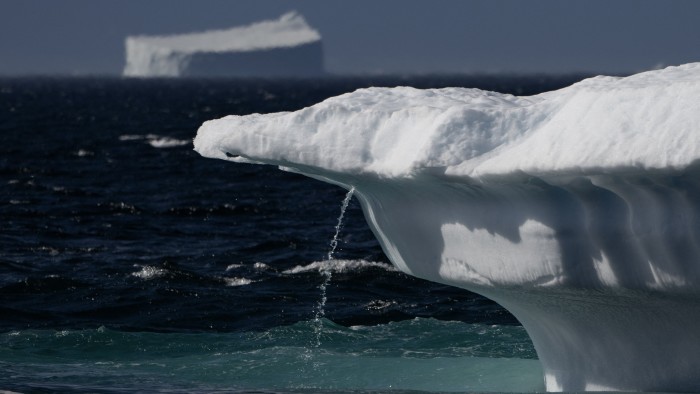Melting of polar ice having effect on global timekeeping, research shows

Simply sign up to the Climate change myFT Digest -- delivered directly to your inbox.
Climate change caused by human activity may be affecting global timekeeping as the melting of ice sheets in Greenland and Antarctica slows the Earth’s rotation, the latest research says.
Scientists have established the slowing effect of ice melt by measuring the changes in Earth’s gravity field, which have been recorded by satellites since 1976.
Because the Earth’s rotational speed is not constant and moves out of line with clocks since the world adopted co-ordinated universal time — or UTC — in the 1960s, an extra second has been added periodically. This is known as a “leap second”.
More recently, fluctuations in the Earth’s core had led to the Earth rotating faster, prompting suggestions by scientists that instead of adding a second it would be necessary for the first time to take away some time, a negative leap second, by 2026 instead.
However, the melting of the polar ice may have counteracted that trend, and could result in a delay to the adjustment until 2029.
This adjustment would have occurred three years earlier, the study published in Nature concluded, had climate change not slowed the planet’s spinning.
“Global warming has proceeded to the point that its effects are showing up in how fast the whole Earth rotates,” said Duncan Agnew, a professor of geophysics at Scripps Institution of Oceanography, who led the research.
“This change in rotation has never been seen before, and this re-emphasises that we are living in a time when unprecedented changes are happening.”

When land ice melts at the poles as a result of increasing temperatures, water streams into the oceans, redistributing mass across the earth and further from the axis of rotation.
When more mass lies closer to the equator, the speed of rotation slows. Conversely, when mass moves towards the poles it speeds up.
“This is a gravitational effect; the ice mass was previously all on Greenland and is now spread evenly around the planet,” said Andrew Shepherd, the head of geography and environment at Northumbria University in the UK, who was not involved in the latest study.
Other geophysical processes contribute to changes in rotational speed. The most significant is tidal friction — the drag that exists between the ocean floor and moving water, which slows rotation.
On the other hand, glacial rebound, where land rises after being previously suppressed because of the weight of ice floes on top of it, and changes of currents in the Earth’s molten core due to its gradual cooling, help increase the speed.
The Earth rotates around its own axis once a day but days vary in length by up to a millisecond. If Greenland’s ice sheet were to melt completely, previous research has suggested that a day would lengthen by 2 milliseconds.
While the scale of these changes seems small per day, they are an indication of the massive geological changes that climate change is driving.
“To change the Earth’s rotation rate by even a tiny amount requires vast amounts of mass to move in relation to that of the whole planet,” said Chris Hughes, professor of sea level science at the University of Liverpool, who was also not involved in the study. “It’s a very clear measure that really significant changes are happening to the planet.”
The so-called negative leap second, which now may have to be delayed, has not occurred before and would require rewriting many computer programs to account for it.
There are plans to scrap the concept of the leap second altogether from UTC by 2035 in a move that would allow the two timescales to go out of sync by more than a second — a difference that is the present threshold.
Unlike other real, climate-related risks to peoples’ lives and livelihoods, this effect probably will not be noticeable to the average person. However, it is measurable, scientists note.
“Burning fossil fuels leads to something enormous — changing planetary motion,” said the University of Exeter’s Martin Siegert. “It’s just another example of how humans are affecting the planet and it’s a good indicator of the enormity of the problem. The sooner we get away from fossil fuels the better.”
Climate Capital

Where climate change meets business, markets and politics. Explore the FT’s coverage here.
Are you curious about the FT’s environmental sustainability commitments? Find out more about our science-based targets here
Comments